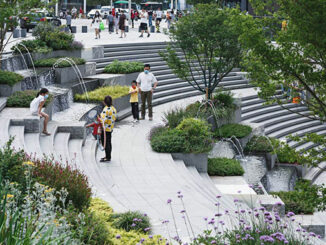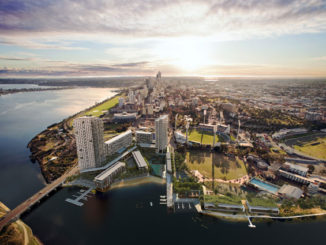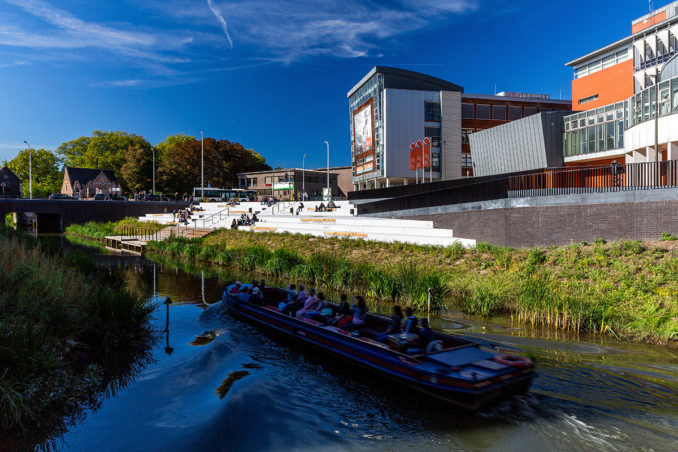
Mechelen is once again a city by the water. In recent years, seven canals have been reopened in the inner city, illustrating a renewed appreciation for the river. Recently, also the Binnendijle at Zandpoortvest has been made visible in the cityscape after being covered for over 40 years. In 2013, De Vlaamse Waterweg NV (Flemish waterway manager) and the city of Mechelen joined forces to achieve this transformation. The site was previously a large parking area squeezed between the city ring, the railway and two buildings of the Thomas More college. This formally underutilized plot has now been transformed into one of the most popular meeting places in the city centre.
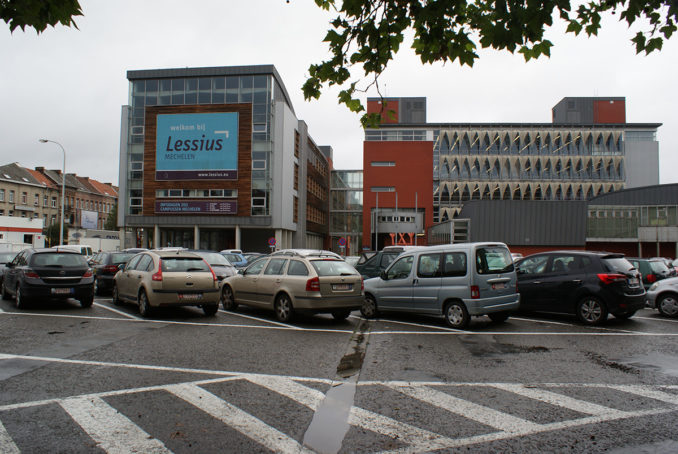
For this project, the city representatives and De Vlaamse Waterweg NV could each count on more than half a million euros of support from the European Union thanks to the Interreg 2 Seas project Water Resilient Cities, which aims to make historic cities more resilient to heavy rainfall. The subsidy was granted, among other things, because of the exemplary properties of the project: for example, the large-scale pavement reduction, the focus on sustainable mobility by creating new possibilities for connections over water and the realization in close collaboration with government officials of Mechelen and the Flemish region, designers and engineers.
DESIGN
The design proposal of OMGEVING focuses on an informal and diverse experience of the Binnendijle. The concrete surface makes way for green, open and gently sloping river banks. The renewed Zandpoortvest and the reopened Dijle path now create a green link between the Botanical Garden and the Mechels Broek nature reserve. The wooden jetty offers new opportunities for tourist boats and recreational use of the water.
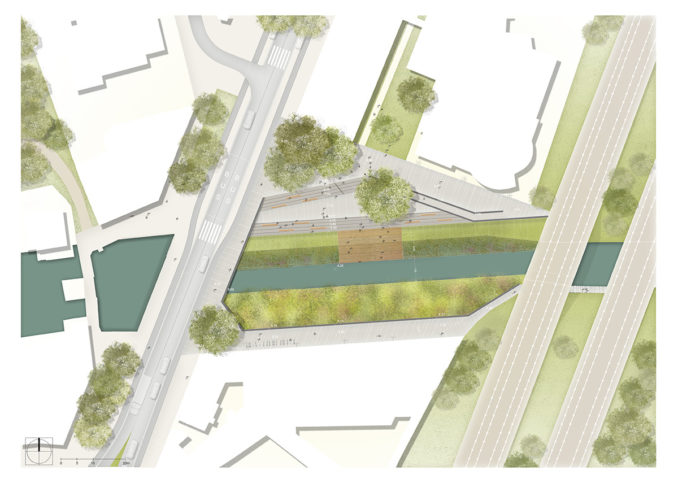
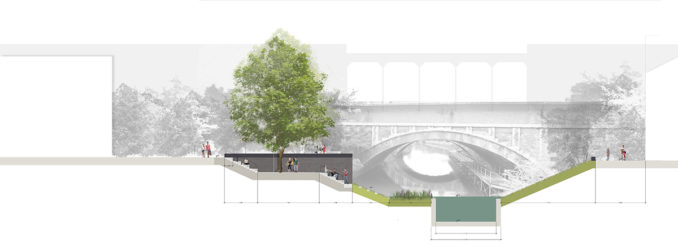
On the northern side of the Binnendijle, a number of stately trees add a third dimension on the new entrance square in front of the university building and provide shading for the paved area. This square, paved in a playful pattern of granite tiles, leads towards a lower landing flanked by sturdy sitting steps along the full length of the waterway. The steps provide attractive seating along the water and border the green slope, the lush ecological river bank and the wooden jetty.
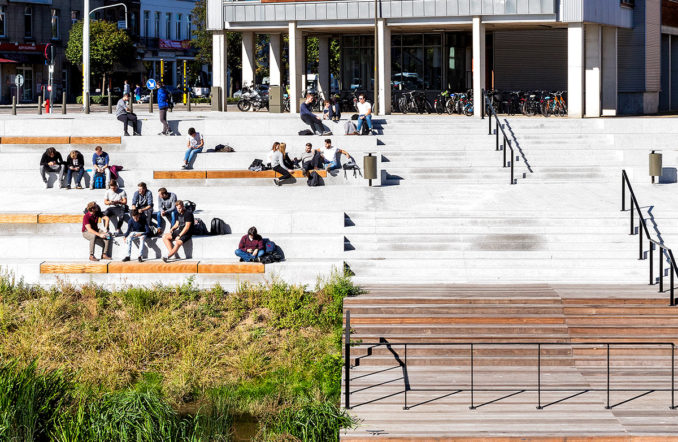
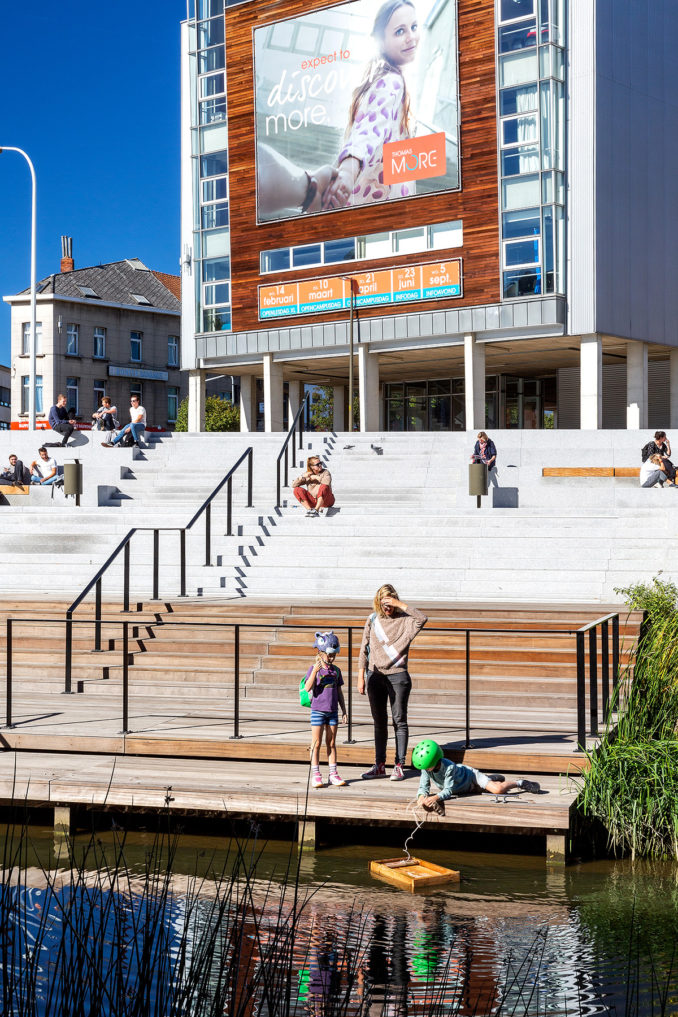
The southern side of the Binnendijle connects the main road to the Dijle path and is thus designed to comfortably support large numbers of cyclists and pedestrians. The path has been reconstructed in the same granite pavement and offers a beautiful view on the flowery ecological river bank on the opposite side, significantly increasing the quality of this slow connection. A large solitary tree accentuates the green character of this place.
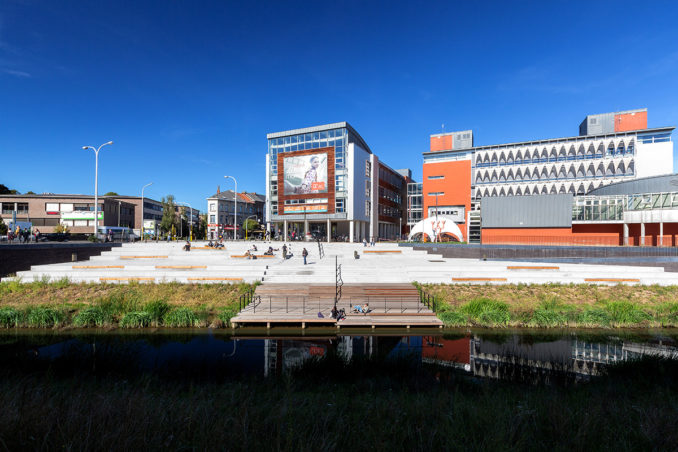
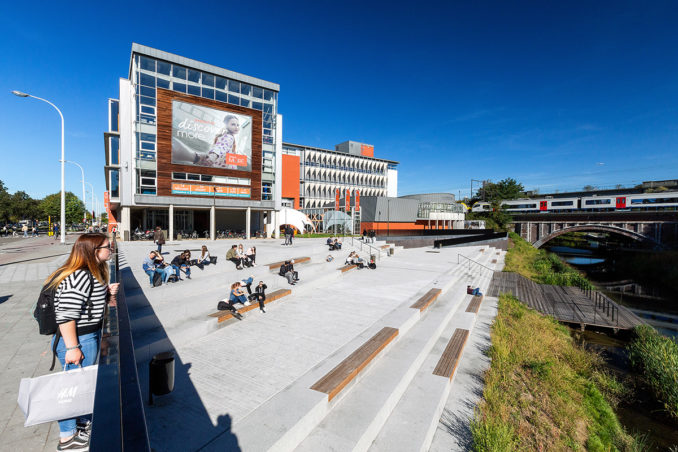
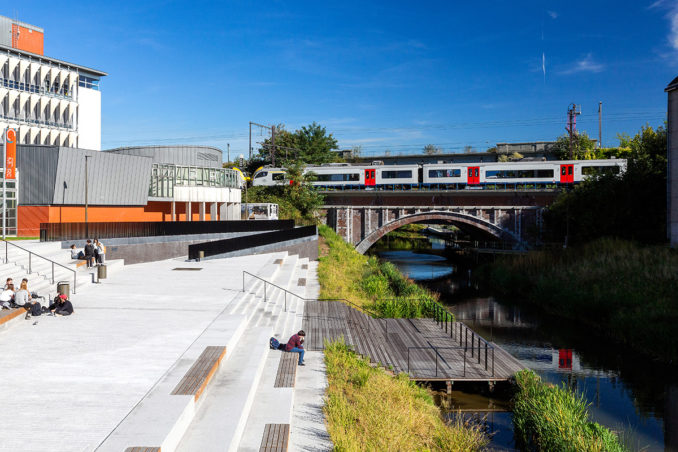
The materialisation opted for high-quality, robust materials, both hard (natural stone) and soft (wood). The massive natural stone steps were meticulously detailed to beautifully incorporate the wooden seating elements and the stairs thanks to customized technical detailing of the separate natural stone elements.
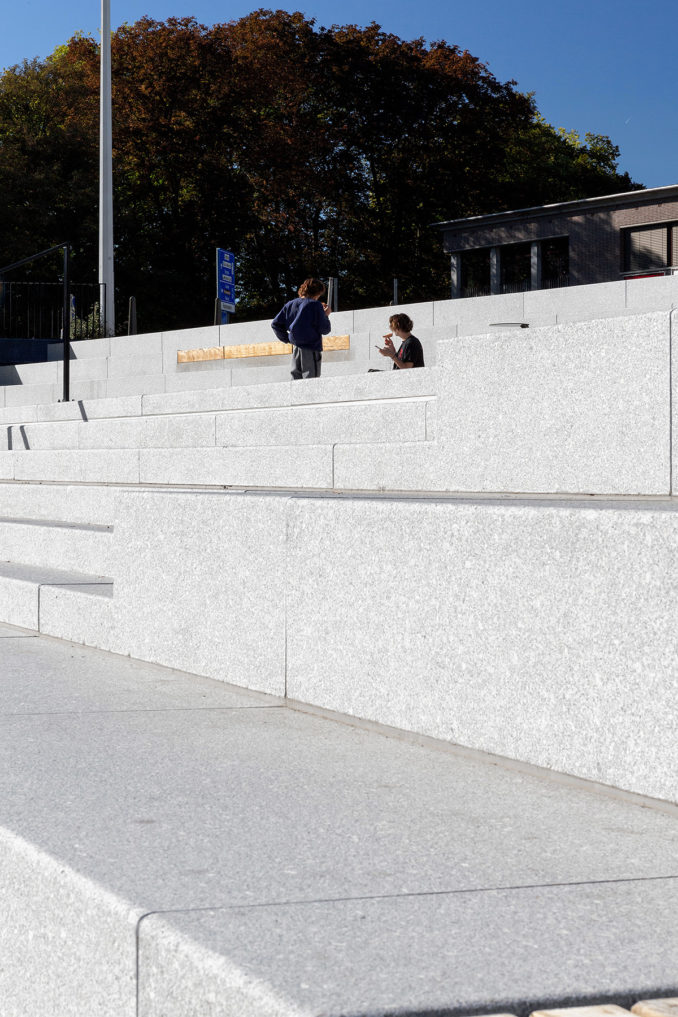
Concerning the vegetation, paved surfaces are balanced with vertical green accents and continuous green river banks along the waterway. The ecological shoreline on the north side was planted with a variety of colourful, aquatic plants and marsh vegetation to prevent erosion at water-level. The planted tree species are three winter linden trees (Tilia cordata ‘Greenspire’) on the entrance square in front of the university, an alder (Alnus x spaethii) on the lower landing and a Robinia spp along the Zandpoortvest ring road.
Finally, a great deal of attention went to the lighting plan, in which besides the functional lighting, subtle LED lighting was incorporated into the steps and the historical railway bridge was lit with accent lighting.
USE
Shortly after the official opening, Zandpoortvest was informally proclaimed as a new hotspot and favourite hangout for local residents of Mechelen. From the start of the new academic year, the students of the Thomas More college are clearly enjoying this new public space. Thanks to the new jetty on the water, visitors to the city of Mechelen can travel to the centre by boat, which will boost tourism. Cyclists along the Dijle path spontaneously stop to relax on the steps of this new public space, looking out over a new piece of urban nature.
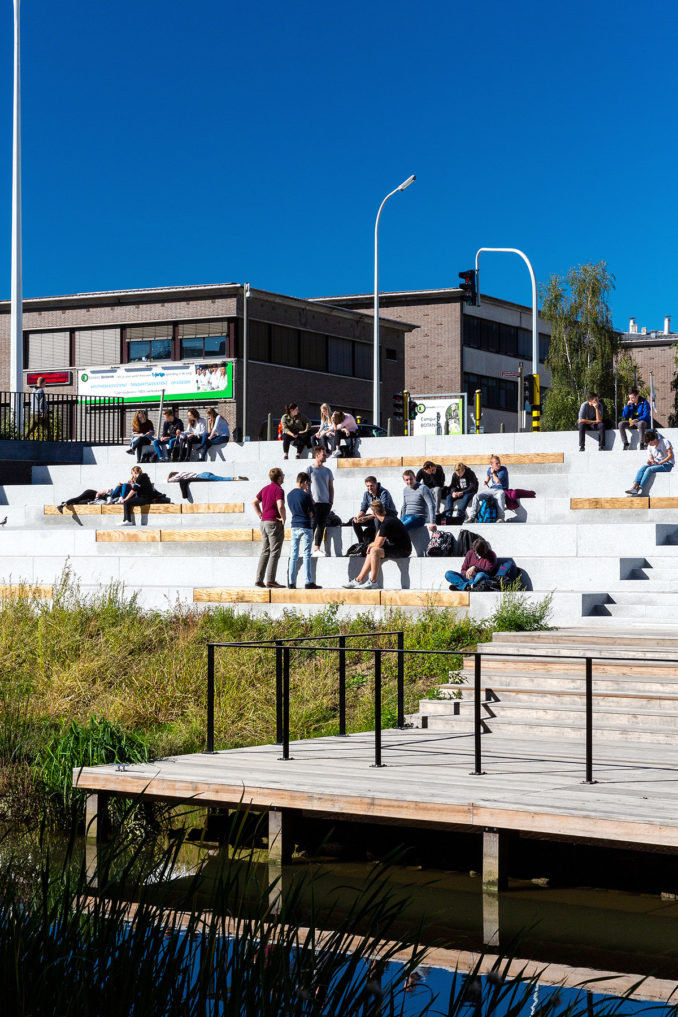
Clients
De Vlaamse Waterweg nv, Afdeling Zeeschelde-Zeekanaal (Flemish waterway manager) – Sander Belmans, project engineer investments
City of Mechelen – Peter Cokelaere, coordinator public space
Design Team
Landscape Architects | OMGEVING
Hydraulic Engineering | SBE
Construction Public Space – ARA
Location | Zandpoortvest 60-Raghenoplein 21, Mechelen, Antwerp
Budget execution (excl. VAT) | € 1.405.000
Subsidies | Interreg 2 Seas Water Resilient Cities € 700.000


